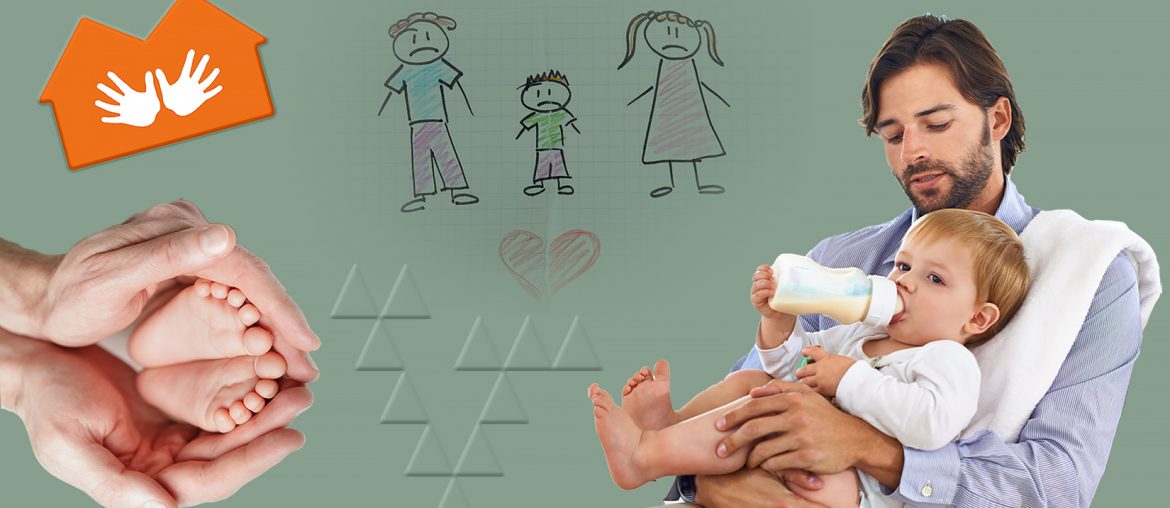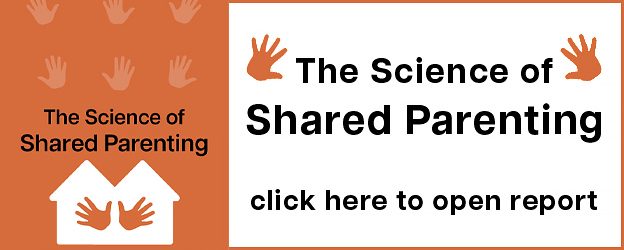The key element in effective or meaningful parenting after marital separation, whether the arrangement is shared parenting or single parenting, is the quality of parenting. It is an essential element of parenting in intact families as well – many parents take it for granted; many parents are even lacking in that respect (we will get to that later) – but it becomes more crucial after separation.
Some researchers even maintain that quality parenting is the crucial factor in making shared parenting beneficial.
The post-separation environment is not only bewildering for children, it is also often unstable, and a risk factor on long-term mental health.
So how does quality parenting come into this? And what is quality parenting anyway?
Quality parenting has been defined as good communication, effective discipline, expression of warmth, as well as an ability to partake in – and be an effective parent in – a wide array of the child’s activities.
Ultimately, good communication and warmness is what makes the other elements gel when it comes to the quality of parenting, and this is best developed during the child’s young age. It is related to having a secure attachment with the child, which is also best developed during the child’s early years.

And none of this can be taken for granted. Research shows that a large percentage of children do not have a secure attachment to one or the other of their parents for various and complex reasons that are beyond the scope of this article. Richard Warshak, one of the world's pre-eminent researchers into children's wellbeing after family dissolution, reported in a paper in 2018 that 40 percent of children do not have a secure attachment to one of the parents, and a significant 18 percent do not have a secure attachment to both parents.
Likewise, many parents are lacking in quality parenting. (If I can hazard an opinion here, I would say that a part of the reason for this is that most fathers still leave the parenting to the mother – equality in parenting in intact families would not only make better children, it would also make it easier for parents to ease into shared parenting arrangements after separation).
It is for these reasons that very young children under 4 years old need shared parenting after separation. It allows the individual parents and the child a chance to develop secure attachments; it allows the individual parents a chance to become sensitive to their child’s particular needs; and that would in turn allow each individual parent a chance to develop quality parenting.
I used the word ‘chance’ thrice in the preceding paragraph, and that is because there is no guarantee that each of the parents would develop a secure and sensitive relationship with the child, as well as quality parenting. And this again underlies the potential benefits of shared parenting for very young children – the children in shared parenting arrangements would have a greater chance of developing a secure attachment to, and good relationship with, one of the parents if the two of the parents are both individually available as effective parents.
This brings us full circle: the development and/or maintenance of quality parenting is predicated on shared parenting, and each of the parents needs to have sufficient time with the child either for quality parenting to develop or to be maintained. And that parenting time has to be across different life scenarios, whether that is educational, social, the ritual of sleeping and waking, recreational time, weekdays and weekends, and so on.
To this end, the parenting ratio that is often cited by researchers holds that the least-involved parent has to have at least 35 percent parenting time, including overnights. Yet significant research has also shown that for shared parenting to be fully beneficial, the balance of time has to be as close to the fifty-fifty ratio as possible.
This is more relevant in cases of ongoing parental conflict, particularly if the child is caught up in the conflict. Some research has suggested that in such scenario, the threat to the child’s emotional security (the Emotional Security Theory is the construct that explains why separation can damage children psychologically, see box below) remains at 35-percent parenting time for the least-involved parent – and the time ratio had to be close to fifty-fifty for the sake of the child’s emotional security.
The issue of quality parenting is set to become more important – and possibly more hotly contested – once the government adopts the intended changes in law to make shared parenting the legal presumption. The so-called legal presumption in family law holds that shared parenting would be the presumptive arrangement to be imposed in family courts for as long as there are no rebuttable reasons to deviate from shared parenting.
To this end, let me express a caveat about shared parenting here. If there is no quality parenting by one of the parents at the point of separation, then it would be best to start with a parenting plan in which that parent gets a meaningful amount of parenting time, but way less than what would be defined as the minimum of shared parenting arrangement, in order to develop quality parenting. Parenting time can then be increased incrementally as the parent’s quality parenting develops. (Of course shared parenting would be harmful if a parent is abusive, including neglectful, towards a child and in that case the better arrangement would be sole physical custody, or single parenting.)
Moreover, children also have to have a say and the older they are, the greater the weightiness of that say on eventual court decisions. Jurisprudence of the European Court of Human Rights shows that by the time children are 12, courts cannot in practice force children to accept a parenting plan or a contact arrangement that they reject. And when they reach 14, their wish is taken as a given without any questioning.
Lastly, we have to remember that shared parenting is not for everyone, and not all parents are interested in remaining involved after separation. This is illustrated by the experience of Sweden, the country that has achieved the highest rate of shared parenting arrangements after separation, where around 50 percent end up in shared parenting arrangements after separation.
This means that in the country with the greatest rate of shared parenting, half of children still end up in single parenting arrangements. And since the child would only have one effective parent in such cases, quality parenting by that one parent becomes even more indispensable.
A variation of this article was delivered as a paper by Victor Borg, the author, in a conference organised by the NGO Happy Parenting Malta for Happier Children.
Donate to Shared Parenting Project
Researching, compiling and writing an extensive report has taken months of work. The report on the science of shared parenting has been serving as reference material for researchers and other practitioners, including parents. Give me encouragement and sustain this invaluable (yet neglected) work by contributing as little as €5.







